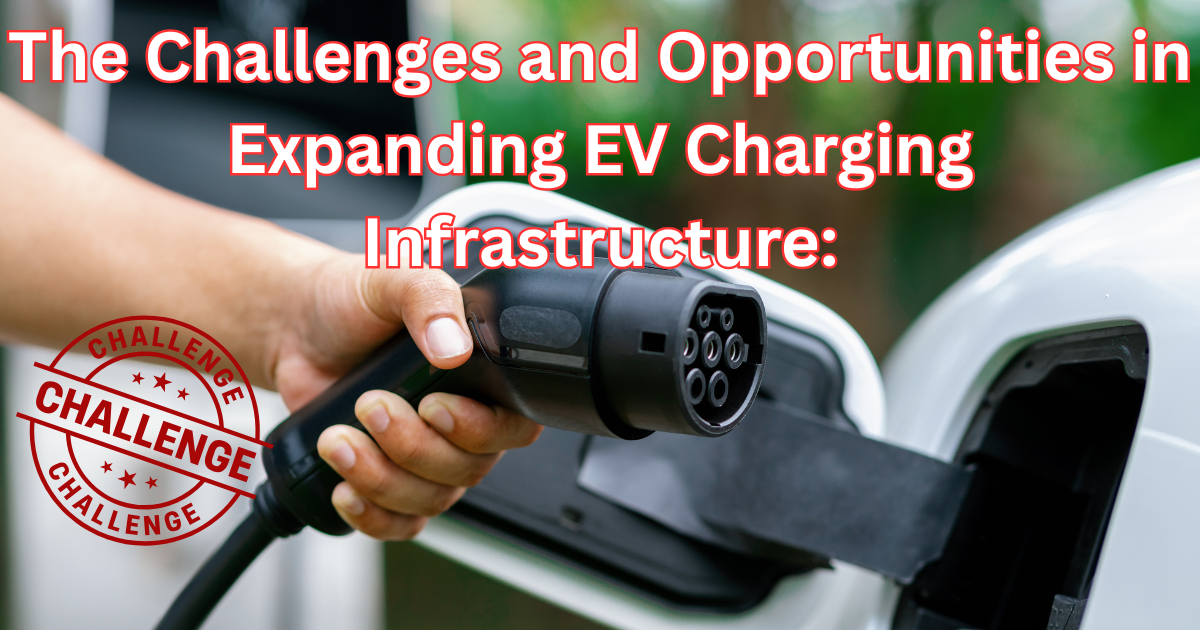The Challenges and Opportunities in Expanding EV Charging Infrastructure: Globally, the shift towards electric vehicles (EVs) is gaining ground. The success of this transition relies on a robust charging infrastructure. Beyond physical charging points, it demands the integration of IT, innovative engineering, and supportive government policies. This article explores challenges of IIT, innovation engineering, and supportive government policies.
The Challenges and Opportunities in Expanding EV Charging Infrastructure
The development of electric vehicle (EV) charging infrastructure is a critical component in the global transition to sustainable As the adoption of electric vehicles accelerates, the demand for accessible, reliable, and efficient charging solutions grows, presenting both challenges and opportunities for stakeholders. And challenges facing the expansion of EV charging infrastructure, including the high costs of installation, uneven distribution of charging stations, technological standardization issues, and the need for integration with renewable energy sources.

The role of government and policies and incentives in facilitating infrastructure development and ensuring equitable access across urban and rural areas. It supports the widespread adoption of electric vehicles and contributes to a greener future.
EV charging infrastructure
Electric vehicle charging infrastructure plays a crucial role in the widespread adoption of electric vehicles, contributing to a sustainable transportation system. Technical specifications with respect to different EVs. The development of an efficient and extensive EV user base. Governments, businesses, and energy providers are investing in the expansion of this infrastructure to encourage the transition to electric mobility, fostering a cleaner and greener future.
EVs, or electric vehicles, are operated on electric power.
They are environmentally friendly and offer zero emissions. To make it more appealing, the government has various policies and tax benefits, including the exemption of road taxes and RTO fees.
Current status of EV charging infrastructure
India’s EV charging infrastructure is still in its early stages of development, but it is witnessing a steady growth trajectory. Here is what the current scenario looks like:
1. growth and Distribution
India’s EV charging infrastructure, with 8,738 operational stations, demonstrates a promising growth trajectory.
2. Charging station types: Captive stations and public charging stations
Diverse charging infrastructure, with 8738 operational stations, demonstrates a promising growth trajectory. However, the uneven distribution, particularly favoring urban centers, can become a challenge to accessibility.
3. Government initiatives to pump development of charging infrastructure.
Additionally, Focus omitted government-led programs like FAME India and the EESL initiative aimed at boosting EV adoption and addressing charging infrastructure challenges. The Union Ministry of Power is also playing a crucial role in developing and enabling standard charging policies to enable the development of public charging stations.
Challenges and Barriers
1. Infrastructure Gaps Despite the progress in infrastructure, gaps remain a significant challenge. Many regions, especially rural areas, still lack sufficient charging stations, leading to concerns about range anxiety and limiting the growth of the EV market.
2. Standardization Issues In 2025, the lack of universal charging standards could continue to create compatibility issues between different EV models and charging stations
3. High installation costs: The cost of installing charging infrastructure, especially fast chargers, can be a significant barrier to widespread adoption.
4. Grid Capacity and Energy Supply: The increasing demand for EV charging stations can place a strain on local energy grids, especially in densely populated areas.
Growth Opportunities and Innovation
- Commercial and Residential Charging solutions
Businesses can install EV chargers at commercial locations like shopping malls, hotels, and offices to attract customers.
- Fleet and Workplace Charging
The electrification of corporate fleets and workplace charging provides businesses with a chance to attract
- Franchise Models
Introducing EV charging as a franchise opportunity allows entrepreneurs to establish stations in underserved areas, expanding access and boosting infrastructure growth
- Public-Private PARTNERSHIPS
Collaboration between governments and private enterprises through subsidies, tax incentives, and grants can accelerate the deployment. of the public.
- Emerging Business Models
Flexible solutions like subscription services, mobile charging units, and on-demand charging create this for businesses.
Conclusion
In this article we discussed the challenges and opportunities in expanding EV charging infrastructure: Globally, the shift towards electric vehicles (EVs) is gaining ground. The demand for accessible, reliable, and efficient charging solutions grows, presenting both challenges and opportunities for stakeholders. Many regions, especially rural areas, still lack sufficient charging stations, leading to concerns about range anxiety and limiting the growth of the EV market
